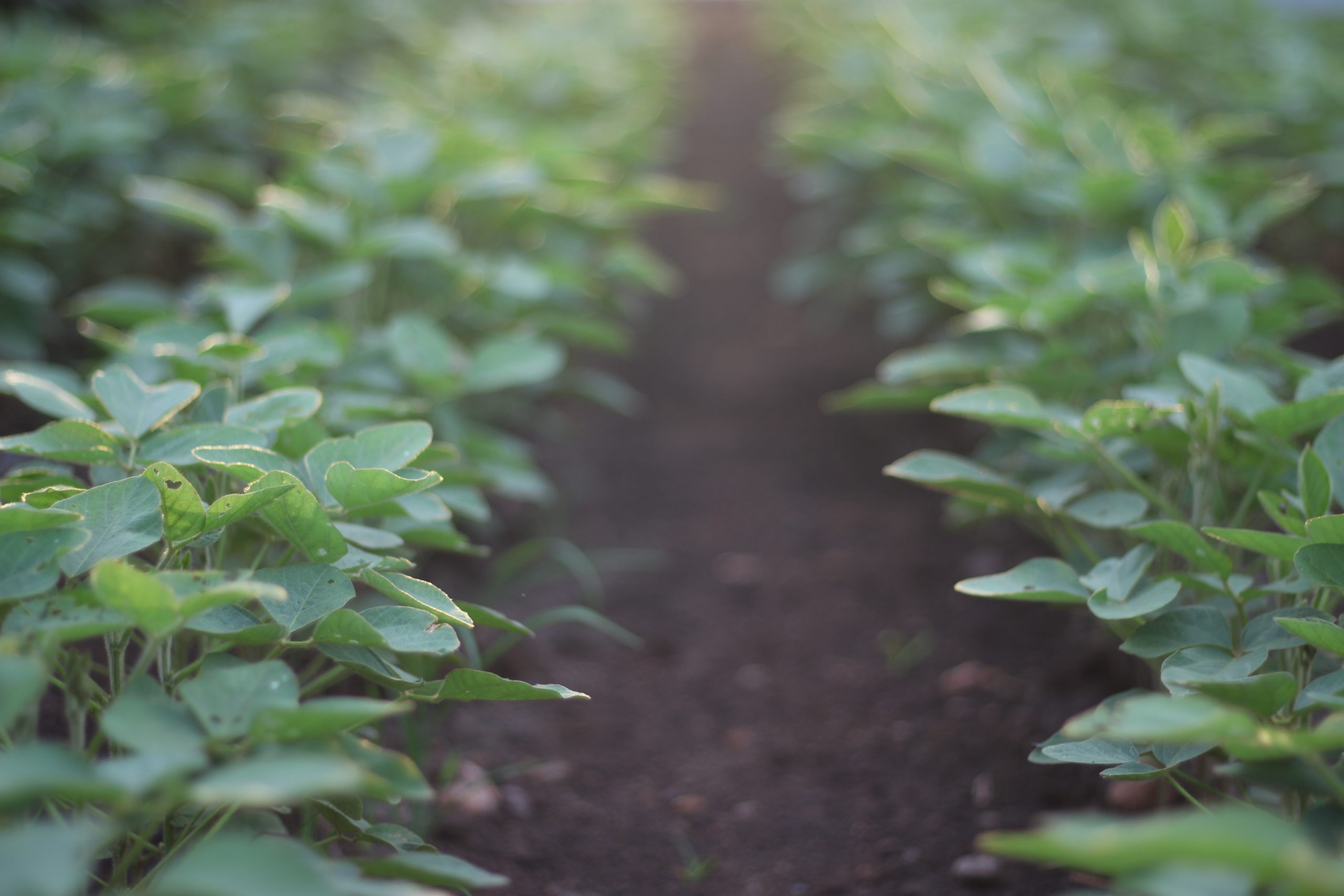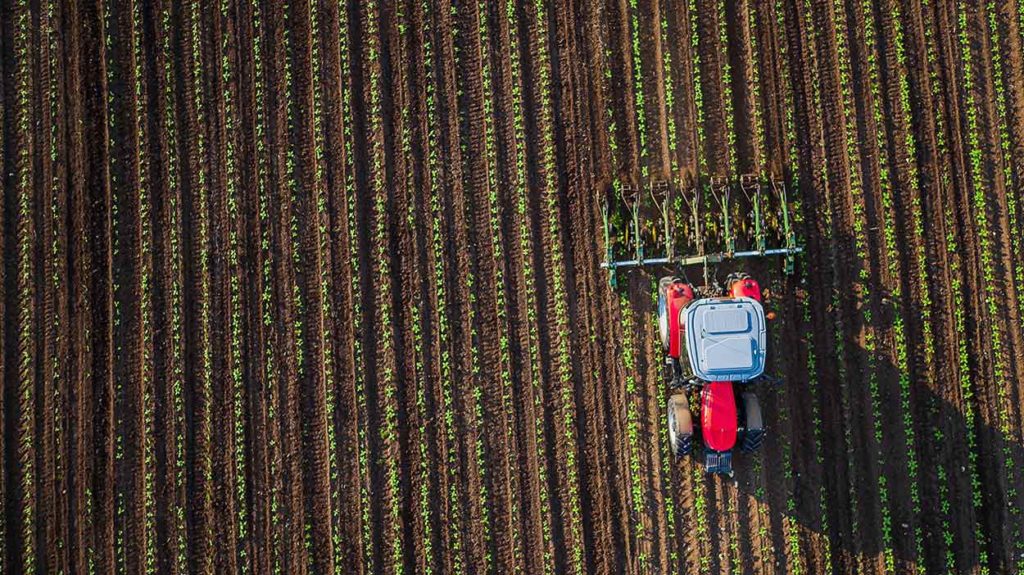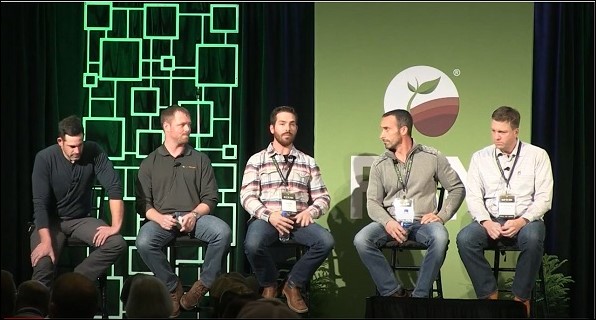- Published On: June 11, 2018
- Author: Steve Sinkula
Agronomy insights
April was extremely cold for much of the Midwest, which caused delays for many growers. However, soil temperatures rose above the May 10-year average for most Midwestern counties, with the exceptions of soggy NW Iowa and Southern Minnesota. As a result, most regions have been able to get most crops planted on schedule.
The focus for June is weed management as we cannot over stress the importance of aggressive weed practices. Based upon following the pre-planting recommendations, our fields should be in good shape with the seed the ground and a weed free start. But we must work to keep it that way!
At AgriSecure, we recommend a pass with your cultivator every 3 to 5 days until the crops canopy covers the rows which creates the best weed control method — shade. Every 3 to 5 days may seem like overkill, but with temperatures ranging between highs in the mid 80’s and lows in the 60’s we are gaining about 22 GDUs per day. Most grasses and broad leaves need approximately 100 GDUs to germinate, so disturbing the top inch of soil every 3 to 5 days is an effective method to keep weeds from getting a start. By working at a shallow depth, we are not disturbing the recently planted seed bed.
AgriSecure recommends using a tine weeder, rotary hoe, or field drag as the best options as each is effective and can be run at high rates of speed (10-12 mph). Gas flamers are also an option, but more caution is required on small crops, so please speak with your Account Executive prior to deploying this tool. Once the crop has emerged, continue making passes every 4 to 7 days with a tine harrow or rotary hoe; with the goal of getting at least 2 or 3 passes. Remember, we recommended higher seeding rates which enables the lose of a few plants during after emergence cultivation – the primary goal is to stay ahead of the weeds.
Switch to a crop cultivator once you can no longer continue with the tine weeder or rotary hoe. Make sure to have on wide sweeps. For example, a field planted with 30-inch rows should have at least 26-inch wide sweeps for most effective control. The first pass with the cultivator should be set several to several inches in depth as our goal is to loosen the soil for the second pass. The crop should be well established prior to second pass (e.g., corn should be nearing knee high). For the second pass, if you have ridging wings put them down. If you do not have ridging wings, we recommend shortening the top link on your tractor to give your cultivator a sharper angle of impact. In either case, the setting should maximize the amount of dirt thrown towards the plant rows to cover the bottom few inches of the plants. This will not hurt the crop; however it will bury any small weeds in the row which were not killed mechanically. At this point, the crop will be in great shape with clean center rows, plants with a solid dirt base, and small inter row weeds covered.
The first 30-40 days of the crop do require a great deal of care and effort; however, with an aggressive approach the fields should be weed free and looking great.
Merchandising update
Domestic Supply vs. Demand Growth — How many farms across the US are certified organic?The answer is surprisingly low. The number of farms transitioning to organic is increasing every year, but demand continues to outpace supply. This leads to a very positive outlook on pre
In the Midwest the total number of organic farms, includes Iowa = 732, Illinois = 205, Minnesota = 545, Nebraska = 162, North Dakota = 114, and South Dakota = 86. Unfortunately, slow domestic growth has forced end-users to rely upon imports to fill the supply gap.
Price Outlook — Prices have experienced some recent upward movement due to spring conditions along with several rejections of organic imports (particularly organic feed grade corn). In next month’s newsletter, we hope to have additional insight on how the spring weather has impacted prices. Please see the graph below, provided by the USDA, which provides a view of the market movement of feed grade corn and soybeans since January.U.S. Organic Corn & Soybean Prices
(USDA National Organic & Feedstuffs Report, May 2018)

In the short-term, please contact your Account Manager if you have 2017 organic feed grade yellow corn open for sale as AgriSecure has recently been contacted by a group motivated to obtain some bushels.
Related Articles
-
Imports Have an Impact on Organic Crop Prices: Here’s Why
Organic soybean prices are skyrocketing. The Jacobsen reported that prices were up to $32 per bushel in the Midwest in May 2021. What’s behind this impact on organic crop prices? And why aren’t organic corn premiums keeping up? In short: it’s all about supply and demand, especially imports, says David Becker. David is an analyst […]
-
New Options Offer Farm Loans for Organic Transition
If securing farm loans for organic transition feels daunting, we have some good news. It’s not as hard as it used to be. In fact, there’s a number of new options that could provide a solution for you and your operation. Traditional lenders, farmland investors, non-profits, and even big food companies are starting to create […]
-
Organic Farming Loans Support Growers during Transition
Ask a farmer what’s keeping them from transitioning to organic row crops, and you may be surprised to hear a common answer. Finances. It’s often a struggle to find organic farming loans tailored to their needs. Yes, organics offer excellent premiums and can bring long-term profitability. But first you have to get through the 36-month […]
-
Organic Breakevens: What to Know and How to Calculate
If you’re thinking about organics, you’ve probably debated whether it’s going to pay off — literally. Yes, the price premiums are good, but you’ve heard your yields will take a hit. How can you predict profitability? The answer: calculating your organic breakevens. What are an organic breakevens? Simply put, it’s a way to calculate what […]
-
Know Your Numbers to Push Crop Profitability
Yield is often the top priority in farming. The truth, though, is that the highest yields will not necessarily result in the highest ROI. And this is especially the case for organic production. We know good execution results in the best yields, but the best way to maximize your crop profitability is to know your […]
-
6 Ways to Protect Organic Profits in Uncertain Times
Economic uncertainty hits all sectors of the agriculture industry, including organics. The good news? It’s possible to safeguard your organic profits. For a start, it’s even more important for organic farmers to focus on executing their operations really well. The better the execution, the better you can weather the market conditions and remain profitable. Here […]
-
5 Steps for Financing the Transition to Organics
Profits. They’re one of the primary reasons farmers decide to move into organic production. Financing the transition to organics, though, can be one of your biggest hurdles. That’s why the support of a banker or ag lender can be a lifeline for farmers looking to get into organics. The right backing helps you build an […]
-
4 Keys to a Strong Organic Fertilizer Strategy
Questions about an organic fertilizer strategy are common in organic farming. How do I provide enough nutrients? In particular, nitrogen. How do I manage my crop and soil without using synthetic fertilizers? Fertilizer can come from a variety of organic sources, including animal waste, decomposing plants, and nitrogen-fixing crops like soybeans and clover. So it’s […]
-
Consider Organic Farming? Yes.
With so much economic uncertainty caused by the COVID-19 pandemic, you may be wondering: Is now the right time to transition into organic crop production? Is this the right time to increase the number of organic acres you’re already farming? My answer, yes. Current market conditions, falling commodity prices for conventional crops and somewhat lower […]
-
80 Million Millennials Can’t Be Wrong: Farmer Panel
80 million millennials are a part of the driving force behind the rapid growth of organic food demand. So why aren’t more farmers transitioning into a system that sees premiums of 2x over conventional and profitable margins? In a panel that took place at FBN’s Farmer2Farmer V event, AgriSecure co-founder and organic farmer Bryce Irlbeck […]
Get in the know
Our newsletter, it’s a quick read. You’ll get industry news plus all the latest organic insights. Who doesn’t want that?









